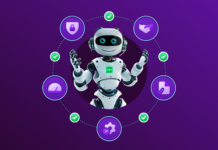Ring. Ring. Ring.
Your phones are buzzing off the hook, your reps are underwater, and your callers are fed up.
Some have waited on hold for too long. Others have sent you email after email with no response. All too many have been transferred from rep to rep, forced to re-explain their problem each time.
Running out of patience, your callers take out their frustrations on your reps—and that makes your job (and theirs) even harder. Sourcing, training, and mentoring qualified staff is hard enough. Turnover forces you to restart the process from square one, stretching your budget—and patience—thin.
Still, the phones continue to ring. How do you answer the call? With digital and voice integration.
The Power of Digital and Voice Integration
The traditional approach to overcoming contact center overload has been simple: More phone calls require more people to pick them up. But at a time where every resource counts, adding more reps adds cost without always seeing a great return. Times have changed, and so should your contact center strategy.
Here’s the shift: Instead of adding headcount, add digital tools that make life easier for your reps—and the customers they serve.
In other words, upping your contact center efficiency requires you to double down on digital.
Read on to discover how you can offset contact center overload with digital and voice integration at every stage of the customer journey.
Before The Call: Redirect Traffic With Virtual Assistants
Step one of helping your reps handle high call volume: Give them less calls to answer in the first place.
Chances are, your reps have received the following inquiries so many times that they can answer them in their sleep:
- What’s my routing number?
- Can you help me reset my password?
- How can I find my pin?
- Where can I order more checks?
These routine, simple questions require routine, simple answers—and they take valuable time away from reps who have more pressing customer issues to solve.
That’s where virtual assistants come in.
By deploying AI-powered virtual assistants on your website, you can automate common inquiries so reps are freed up to handle complex customer issues that require human touch. Think of your virtual assistants as your first line of defense: They handle easy questions so customers get the help they need without having to pick up the phone.
There’s a catch, though: Not all virtual assistants offer off-the-shelf results for your contact center. Some require you to build them yourself, gather the data they need to operate, train them, then integrate them into your existing tech stack—a tall order when you’re trying to make your job easier, not harder.
Glia Virtual Assistants (GVAs), on the other hand, are pre-built with answers to 800+ common banking queries. That means you can deploy, handle inquiries, and relieve reps right out of the box—no complicated setup required. For example, Service 1st Federal Credit Union used GVAs to quickly:
- Decrease calls handled by a rep by 32%
- Reduce abandonment by 88%
- Cut AWT by 73%
GVAs are a huge step for your digital and voice integration strategy, but what happens when customers still need to speak to a rep?
During The Call: Add Context With AI
Once a customer has already typed out their issue to a virtual assistant or explained it to a rep, the last thing they want to do is repeat themselves.
Unfortunately, when your contact center lacks digital and voice integration, customers must start from square one after each transition between channels. This not only drives up frustration, but wastes time. When reps have no context for why a customer is calling, they have to ask the customer to explain themselves before they can help, driving up handle times and wait times in the process.
With the right digital tools, your contact center reps get the full context right away, so they can dive straight into the heart of the issue without wasting time on unnecessary explanations. Here are a few you can implement right now:
- Glia Cortex Transfer Summary uses AI to enable smooth handoffs from your virtual assistants to your contact center staff. Before picking up the phone, reps quickly get an AI-powered summary of the interaction with a virtual assistant, so they know why a customer is calling and how to provide fast help.
- Glia Cortex Heads Up gives reps a summarized customer history before they pick up the phone. This feature provides a clear summary of previous interactions—not just the chat that immediately preceded the call. Rather than spending time asking the customer to explain a big-picture saga, or poring through records to get the story themselves, reps can understand who they’re speaking with, what they’ve already discussed, and how they can proactively assist them.
- Glia’s Screenshare and CoBrowsing tools let reps see exactly what customers see on their screens, even when their interaction starts over the phone. No more forcing customers to describe where they’re stuck on your website or app. These digital tools give your reps full visibility into what a customer is looking at so they can provide faster, clearer, and easier phone support.
After The Call: Automate Documentation
After using virtual assistants to limit call volume and digital tools to help reps expedite interactions, there’s still one more moment in a customer interaction you can save time on: The wrap-up survey after a call.
As a contact center leader, you know how important it is to have accurate records of every interaction at your disposal. Whether you’re focusing on quality control, ensuring compliance, or identifying training opportunities, interaction documentation is an absolute must.
Unfortunately, dealing with record-keeping after a call requires a considerable time investment for reps. Instead of picking up the phone to assist the next caller, they’re stuck manually entering data to wrap up their current interaction.
It’s time to give them digital tools that do the tedious, time-intensive work for them.
Glia’s Cortex Automated Interaction Wrap-up, for example, helps your reps fly past post-call documentation without lifting a finger. This AI-powered tool transcribes the entire interaction, analyzes it, and enters notes that sum it all up—saving reps up to 60 seconds per interaction.
Even better, it standardizes your record-keeping process: While every rep handles post-call documentation slightly differently, automating the process removes human subjectivity. As a result, you can be sure you’re receiving objective, accurate insights so you can confidently identify areas for specific rep improvement or larger contact center trends.
Each of these tools are powerful on their own, but their combined effect is even greater. Find out how Service 1st Credit Union used Cortex Interaction Wrap-up, Cortex Transfer Summary, and other Glia features to:
- Reduce average wait time by 71%
- Decrease monthly calls by 29%
- Cut abandonment rate by 95%
Jumpstart Digital and Voice Integration with Glia
With the right tools, your contact center can meet the challenge of high call volume without adding headcount. But having the right partner makes a big difference, too.
Glia is proud to be that partner for over 600+ financial institutions. Our digital tools add AI efficiency and time-saving ease to every step of your contact center experience. They’re also incredibly simple to implement and use. Take it from Azura Credit Union, which utilized digital and voice integration to see impressive results such as a 50% decrease in average phone wait times. As their VP of Digital Member Experience said:
“When Glia tells you it is seamless, easy, and intuitive, they are not lying. Go all in. It’s everything they promised it would be.”
Want to see how Glia’s digital tools can supercharge efficiency in your contact center? Get in touch today to request a demo.





